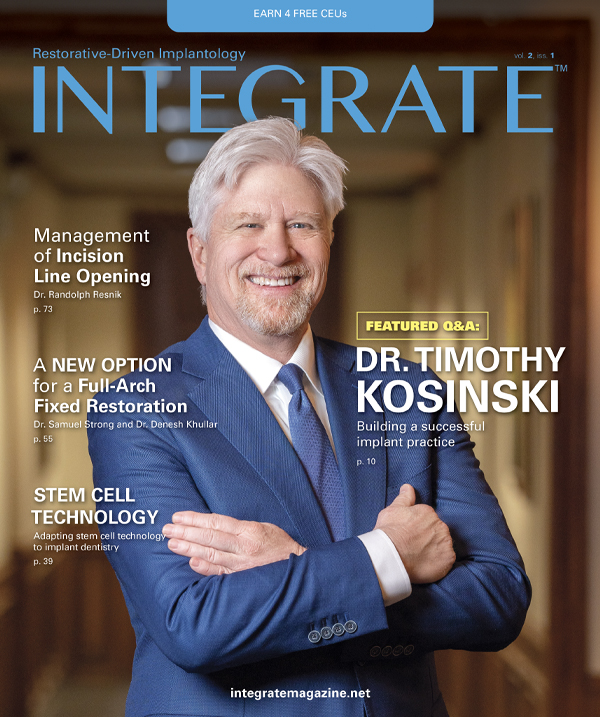Editor's Letter: Better for the Patient
During forty-five years in the dental profession, I have developed a simple test for deciding whether new techniques and products should become part of my practice: Is it better for the patient?
This test has worked remarkably well during these past decades as dental implantology became a proven and popularly accepted treatment for missing teeth. Missing one tooth? A single-tooth implant is far better for the patient than sacrificing healthy tooth structure to make a bridge. Full dentures? Implant overdentures are better, and for most patients fixed implant prostheses are better still.
What about bone grafting? Using autografts was certainly better than placing implants into sites with compromised bone volume. In most cases, allografts were even better because they eliminated painful donor sites. Immediate loading? In carefully selected situations, receiving an immediate provisional prosthesis was more comfortable for the patient, provided a faster return to normal function, and contributed to a better esthetic result.
Digitally guided implant surgery is another example of the “better for the patient” principle. Placing implants more accurately in a more efficient procedure provides better outcomes, measured both by patient comfort and prosthesis quality. In this issue, Dr. Taylor Manalili shows the value of this technology in an anterior case, while our cover subject, Dr. Timothy Kosinski, shows us similar benefits for a full-arch case. While digital guides may slightly increase the cost of the procedure, these cases show that the benefits to the patient far outpace the expense. Again, being better for the patient is the key criterion. In a separate article, Dr. Manalili has also summarized the different types of surgical guides available, along with the recommended uses for each.
Dr. Raymond Choi’s dedication to his elderly patients has earned him my sincere admiration. As he explains in this issue, despite the need for additional medical precautions, implant treatment remains a viable treatment for many older patients. Particularly in patients with xerostomia or arthritis, implant treatment is usually better for the patient than removable options.
For researchers working to further improve dental implant treatment, the future is promising. Our article about Dr. Allan Dovigi and his work using stem cell technology to create living bone grafts shows the tremendously improved methods that will be available in the next few years. As dedicated practitioners, our readers will appreciate this glimpse into future ways to make treatment better for the patient.




